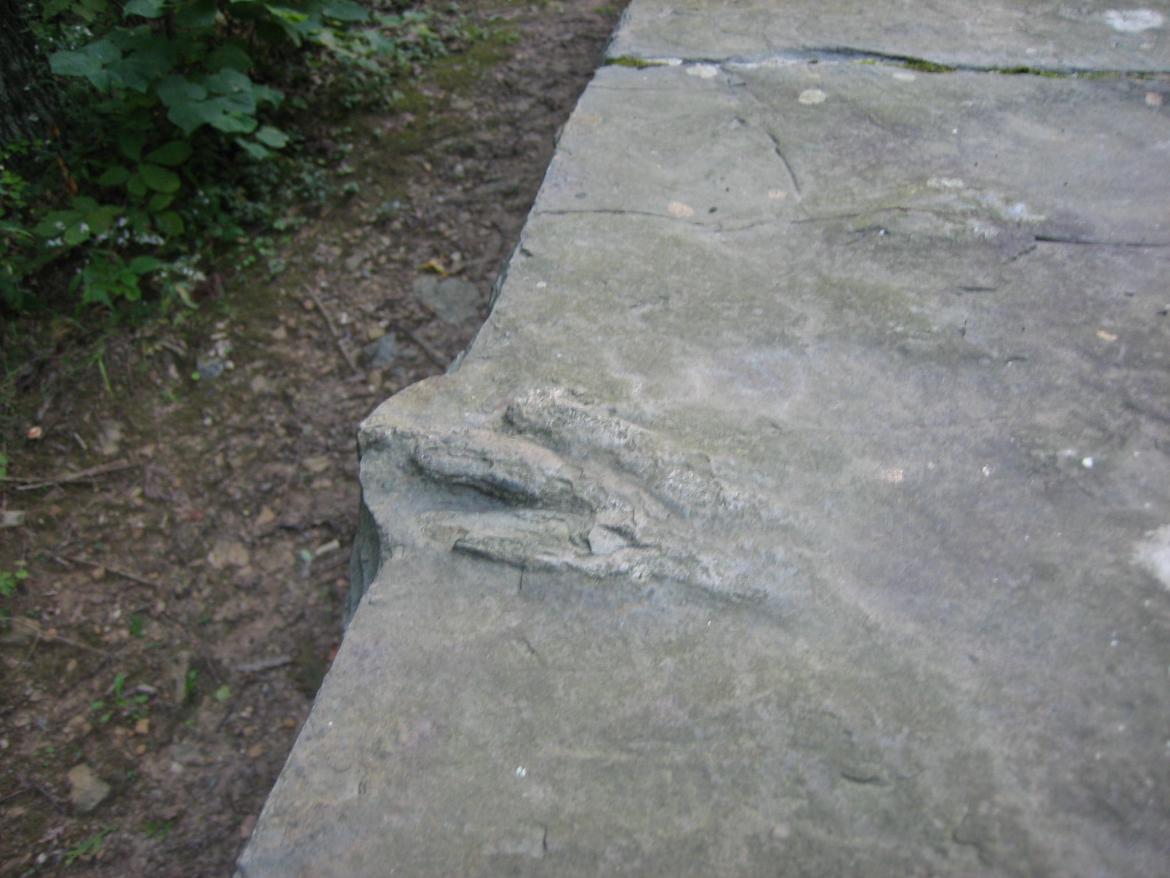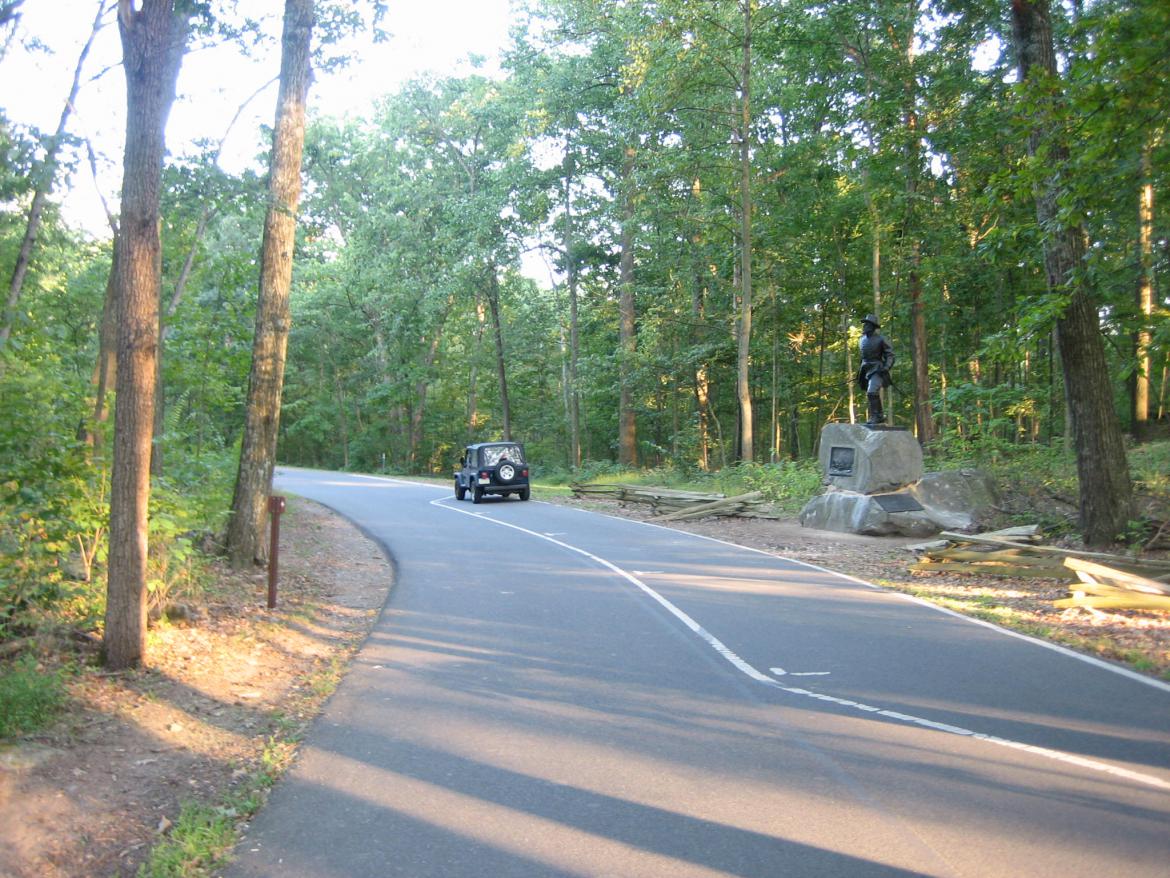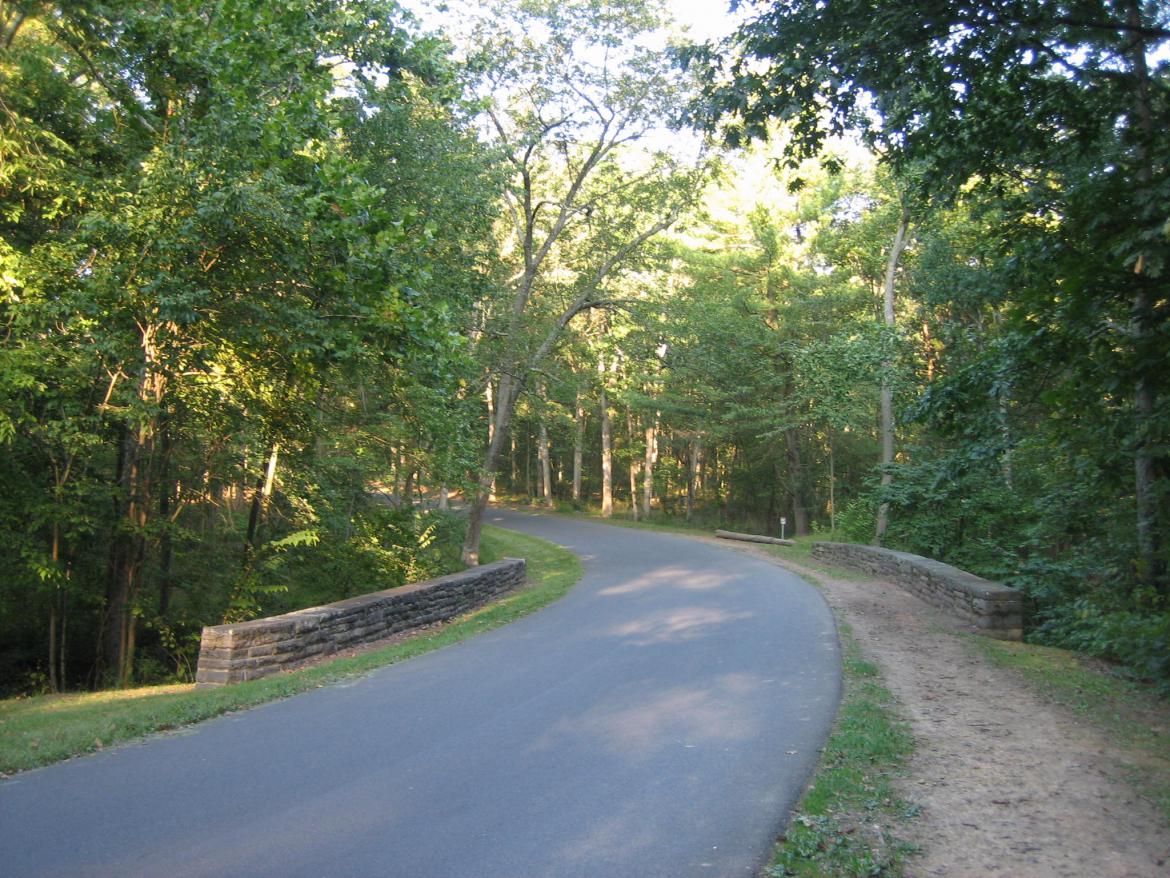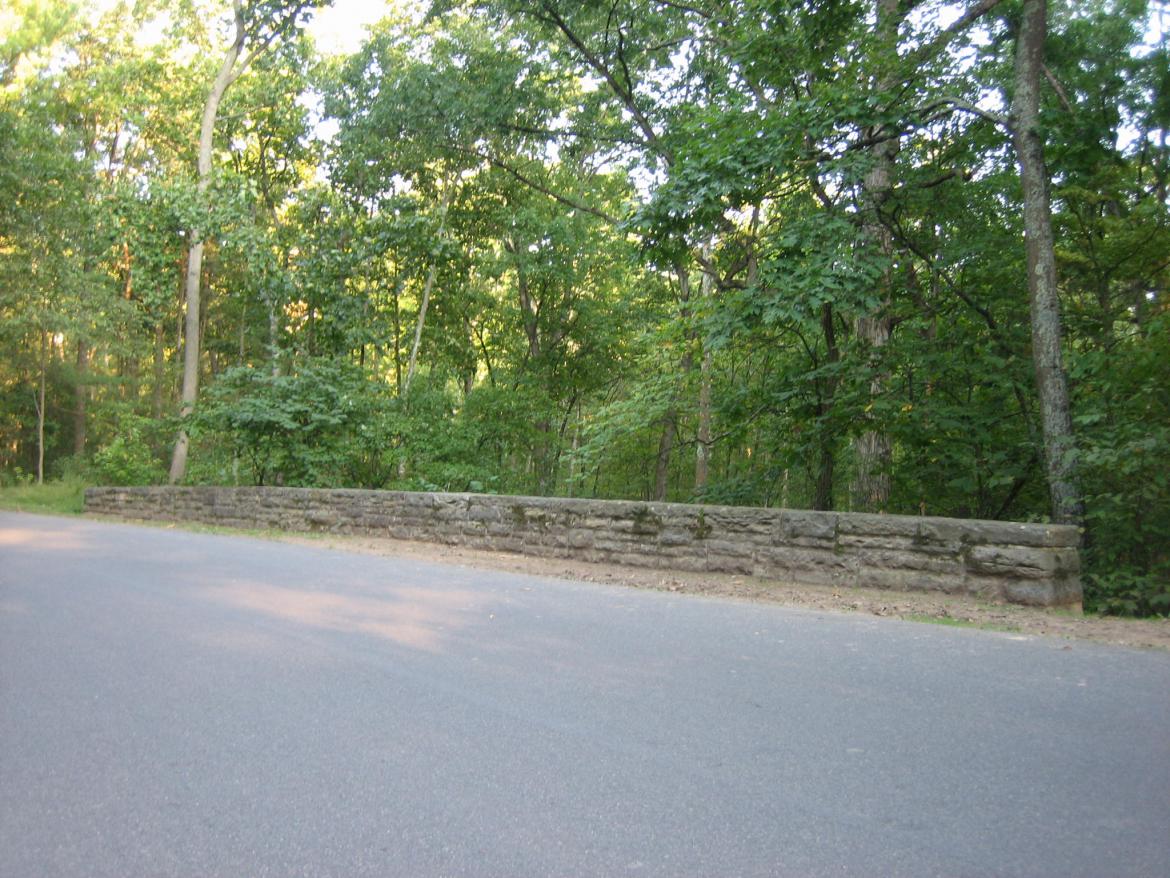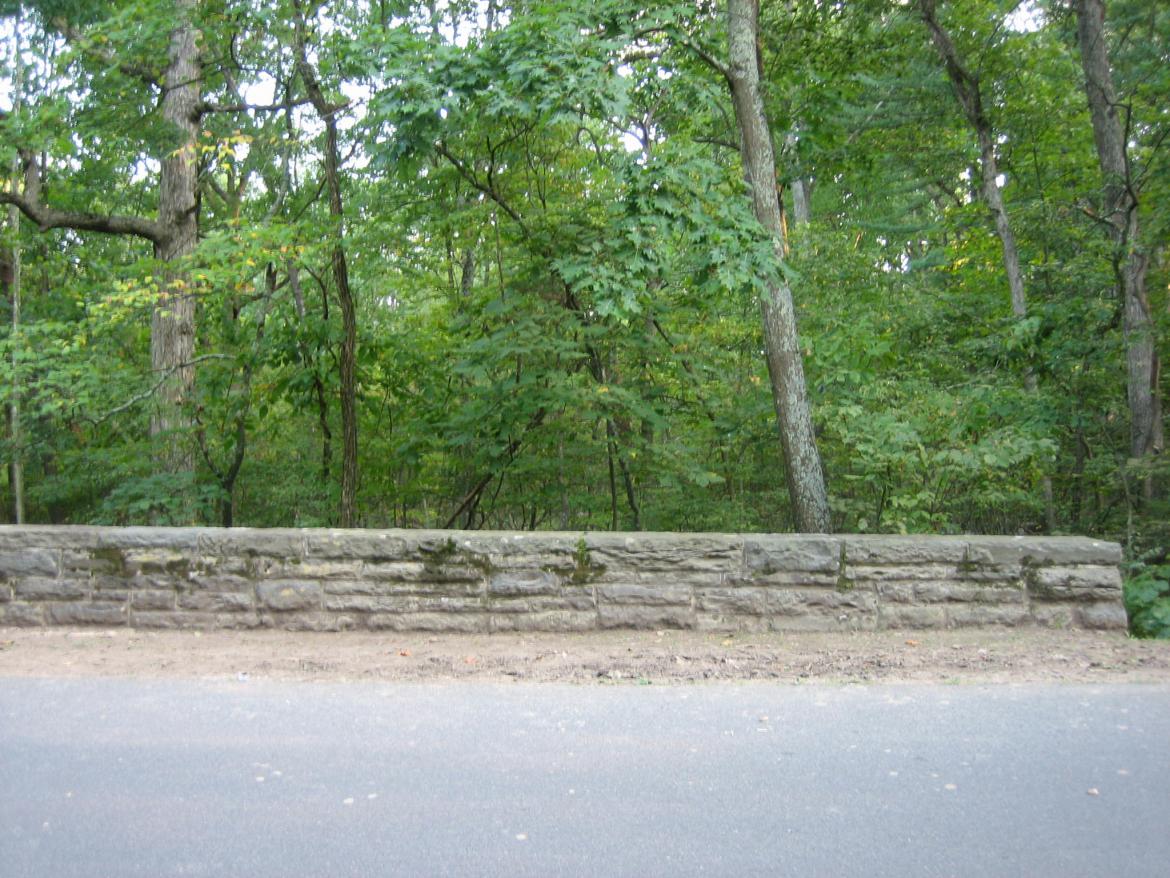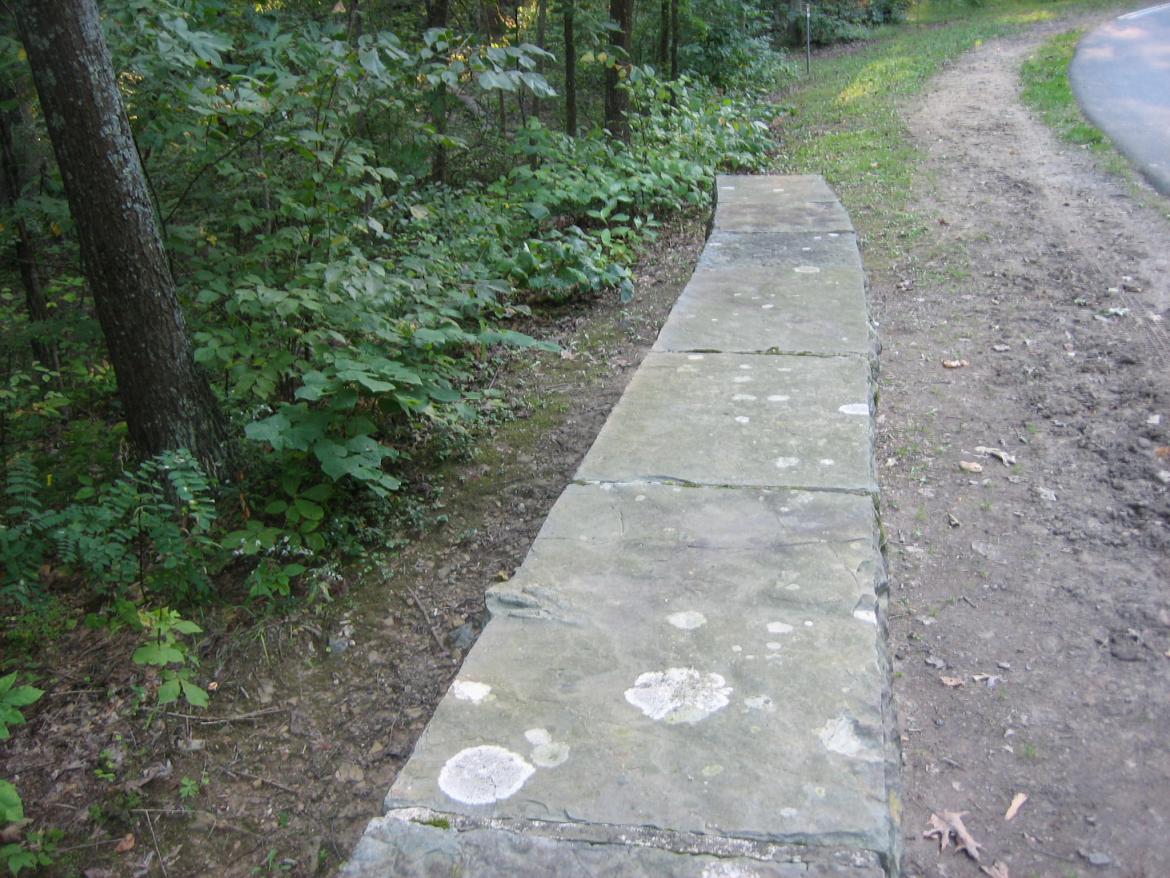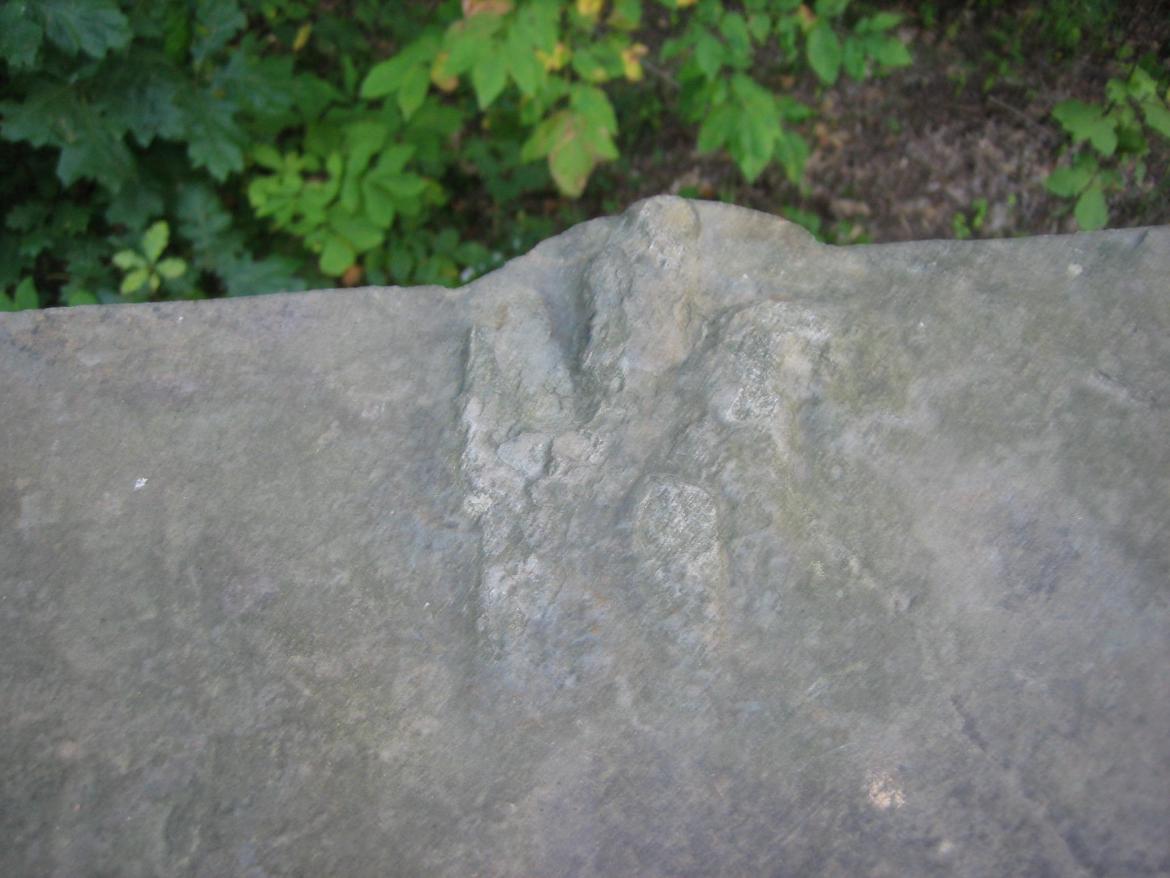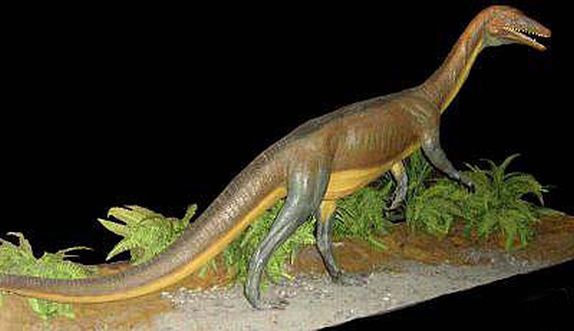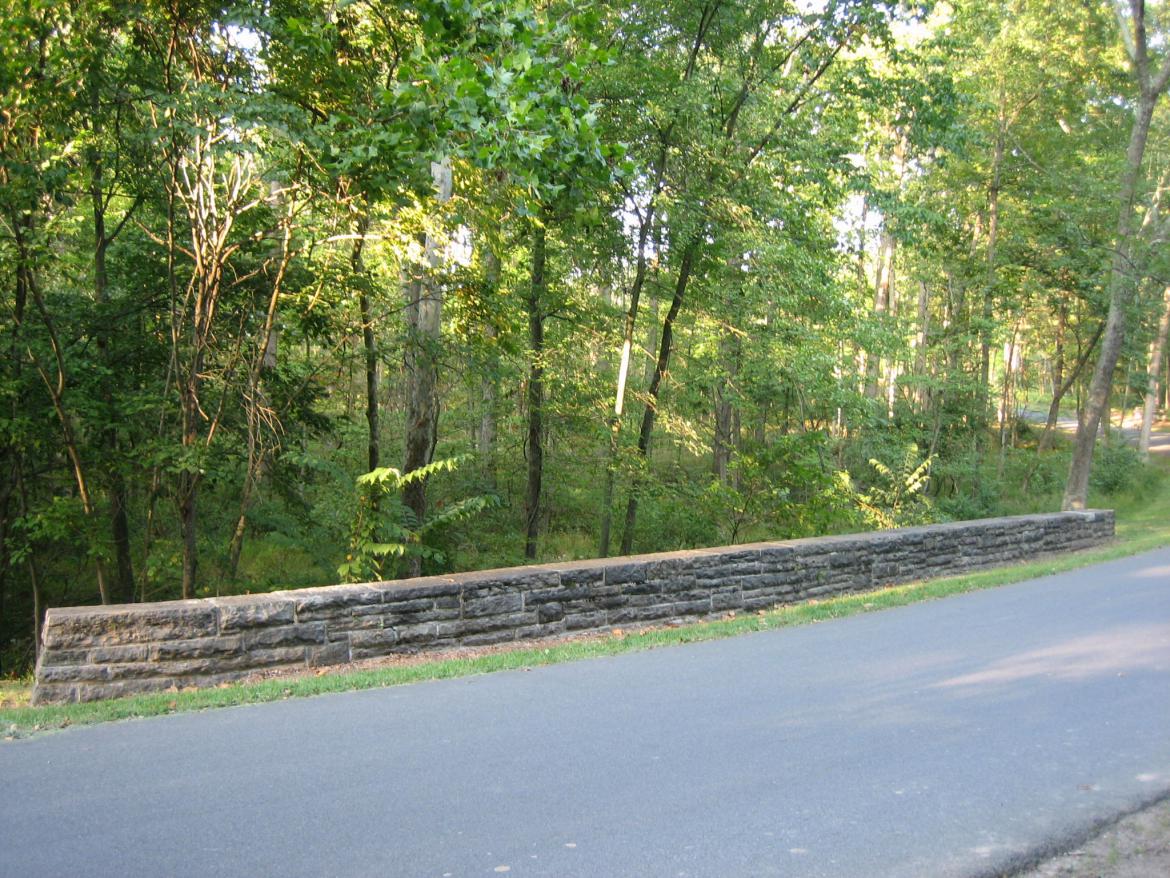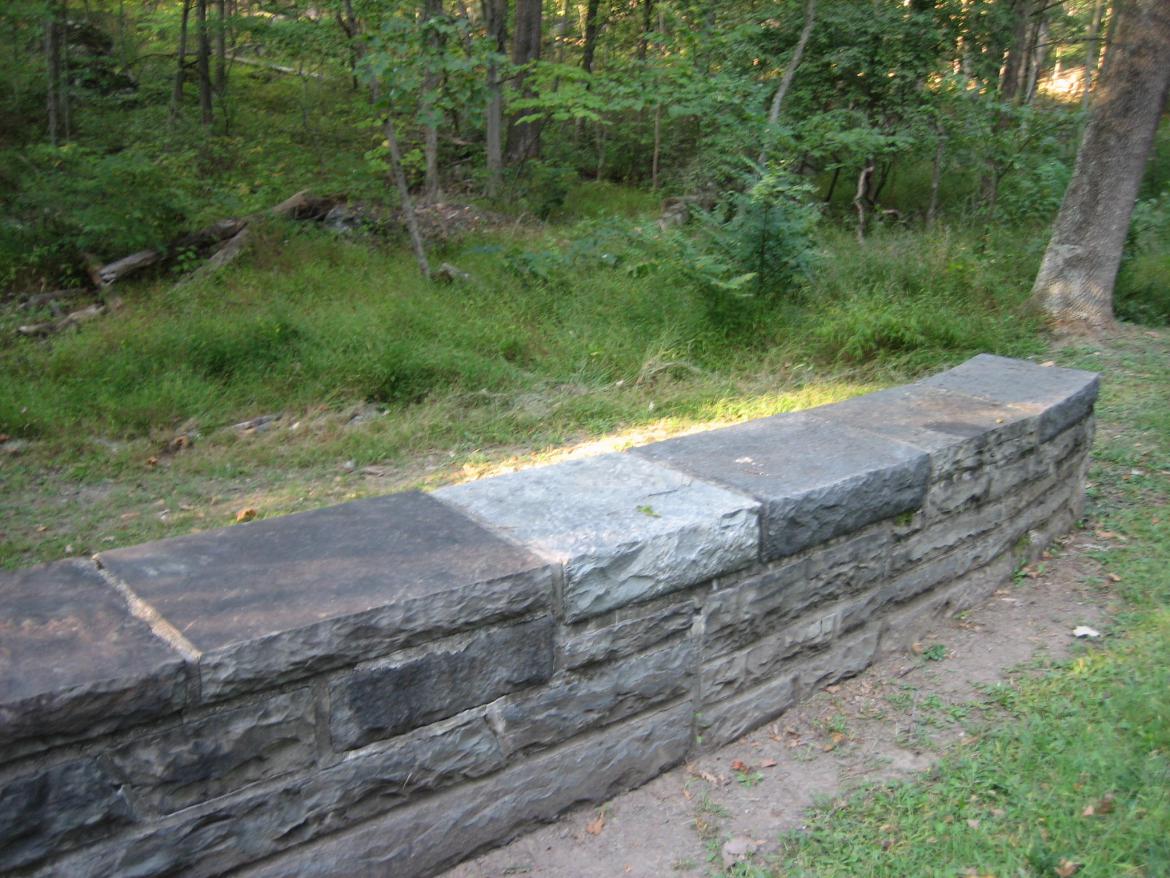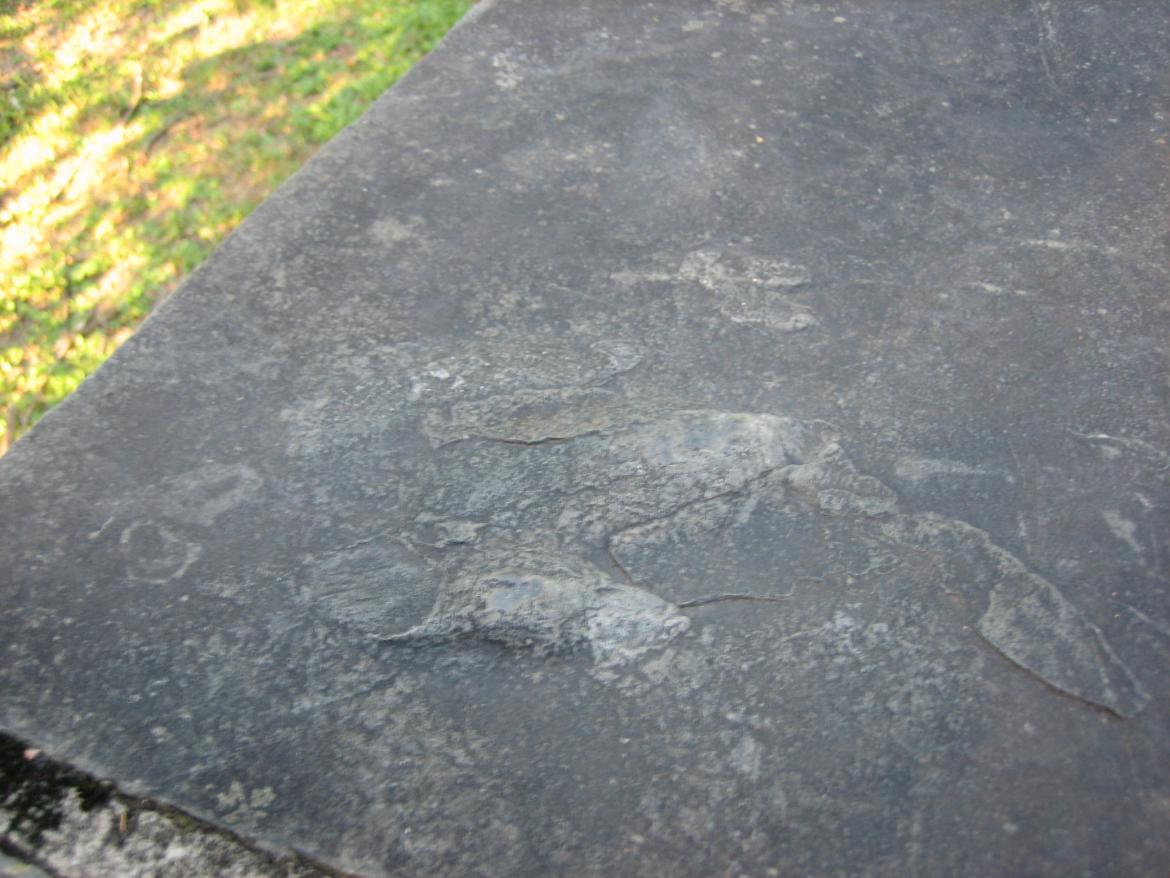On the stone bridge that carries South Confederate Avenue over Plum Run are three dinosaur footprints. This one, on the south side of the road, is of anchisauripus sillimani, a lion-sized meat eater that walked on two legs. It roamed Pennsylvania approximately 200 million years ago when this area was similar in climate to Florida’s Everglades. This view was taken from the east facing west at approximately 5:45 PM on Friday, September 19, 2008.
Three dinosaur footprints sit atop the rock bridge which carries South Confederate Avenue over Plum Run. The bridge, at the foot of Big Round Top, was constructed circa 1938. The rocks used to build the bridge are made of sandstone or siltstone. They were taken from the now abandoned Trostle Quarry, located approximately three miles east of York Springs, Adams County, Pennsylvania. The prints are from the Triassic period, of the Mesozoic era, approximately 200 to 250 million years ago. The Mesozoic era is also known as the “Age of Reptiles.”
To get to this stop, travel east on South Confederate (it’s a one way road so if you’re driving you really need to be traveling east) until you get to the William Wells Statue. Use one of these parking spaces. This view was taken from the northeast facing southwest at approximately 5:45 PM on Friday, September 19, 2008.
The bridge is approximately 40 yards ahead (east) of the parking spaces by the Wells statue. This view was taken from the west facing east at approximately 5:45 PM on Friday, September 19, 2008.
We’ll first go to the south side of the bridge. This view was taken from the north facing south at approximately 5:45 PM on Friday, September 19, 2008.
We will go to the right (west) section of the south side of the bridge, and count six sections from right to left (west to east). This view was taken from the north facing south at approximately 5:45 PM on Friday, September 19, 2008.
On top of the sixth section, you’ll see the footprint sticking a little bit over the south side of the rock. This view was taken from the east facing west at approximately 5:45 PM on Friday, September 19, 2008.
For some Licensed Battlefield guides with younger children on the tour who can’t follow the Civil War battle action as well as their parents, these footprints can be fairly entertaining. This view was taken from the north facing south at approximately 5:45 PM on Friday, September 19, 2008.
Here is an image of Anchisauripus roaming about on its hind legs in its subtropical habitat.
For the other footprints, we need to go to the other (north) side of the bridge. This view was taken from the southwest facing northeast at approximately 5:45 PM on Friday, September 19, 2008.
Go to the right (east) side of the bridge and count five stone sections from right to left (east to west). This view was taken from the southwest facing northeast at approximately 5:45 PM on Friday, September 19, 2008.
In the northwest section of the fifth stone are footprints of atreipus milfordensis, a dog-sized plant eater which also roamed eastern America approximately 200 million years ago. This view was taken from the southwest facing northeast at approximately 5:45 PM on Friday, September 19, 2008.
There are two prints here. A small fore print on the right, and the larger hind print on the left. This view was taken from the southeast facing northwest at approximately 5:45 PM on Friday, September 19, 2008.
In 2001, Pennsylvania considered having atreipus milfordensis named the State Dinsosaur. However, opposition from legislators who wanted a large manly meat-eater as the state dinosaur instead of this small, wimpy, plant-eater (even though it looks fearsome in this photo) led to its rejection, and Pennsylvania does not have an official state dinosaur.

